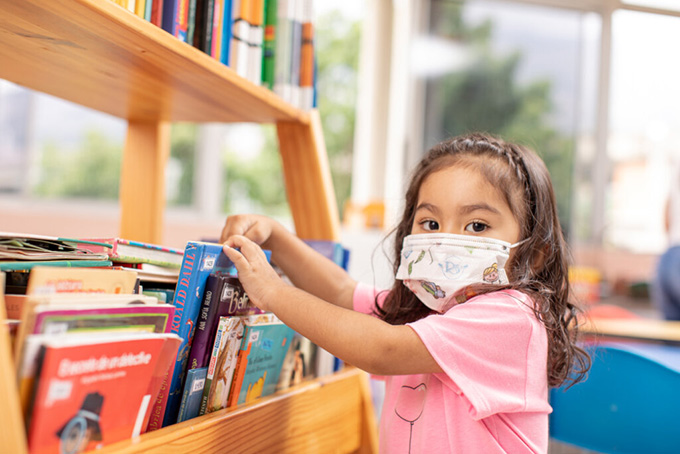
The hospitalization of any person supposes a parenthesis in life that, in direct proportion to the time it lasts, causes damage during and after it ends. In the case of boys and girls, it causes situations of boredom, demotivation or uncertainty that are especially difficult to manage independently.
The hospital classrooms are a resource of the educational system to care for those minors who have to be hospitalized for different periods of time and who cannot attend their educational center regularly.
Although the main objective of these classrooms is to guarantee the continuity of the educational process during hospitalization, they improve the conditions of stay in the hospital center in many other areas.
These classrooms seek a comprehensive approach that takes into account health aspects along with psychological and pedagogical ones, which implies benefits at a cognitive, affective and social level.
Multiple objectives
The objectives of hospital pedagogy are to give continuity to the curriculum established according to the educational level and to establish the appropriate adaptations, but they also aim to:
- Facilitate the integration of the child after his period of hospitalization.
- Minimize the minor’s school delay.
- Promote the participation of other entities and non-profit groups focused on the care of hospitalized children.
- Allow the hospitalized minor to assess the real dimension of his illness.
- Giving a positive and formative character to the recreational activities carried out during hospitalization.
- Propose activities focused on improving the psycho-affective dimension of the minor.
The purpose of the hospital classroom is to provide the necessary tools for the students to satisfactorily face the curricular contents and the disease, in order to try to improve their quality of life.
Humanize the hospital experience
The activity in hospital classrooms allows to cultivate the natural joy of children and to guide the minor on a personal and professional level. These spaces are considered highly valued by patients, families, health personnel and teachers, because they humanize their hospitalization experience and provide benefits to all the agents involved, while favoring the improvement of resilience.
In these classrooms, the teaching practice has different characteristics from those proposed in ordinary educational environments. It is based with even more emphasis on the principles of responsibility, fairness and equal opportunities. They are multidisciplinary , since activities are designed and put into practice in which professionals from the health and education areas participate.
It is a task that humanises the hospitalization experience of minors suffering from a disease, and provides benefits for all the agents involved. In the hospital classroom, the minor can enjoy unique learning experiences, receiving the help of the teacher to carry out school tasks or other types of playful and leisure activities, learn new things and occupy part of the time that their hospital admission lasts. .
Coping with the curriculum and the disease
The teachers who carry out their work in hospital classrooms must provide students with the necessary tools to develop and optimize their development and personal growth and the ability to self-manage their illness.
In short, it is committed to the fact that the student faces, satisfactorily, both the curricular contents of the educational stage in which he is enrolled, as well as his illness, contributing to the improvement of his quality of life and ensuring the continuity of the educational process .
Help for families
The illness of the child in the school period is a situation that will not only affect the minor, but also their families. The hospital classroom is the place that can alleviate the negative effects of hospitalization for both.
From the perception of families and health personnel (made up of professional profiles from the field of medicine, nursing and nursing assistant), hospital classrooms provide numerous benefits for minors:
- Adaptation to your disease situation.
- Affective support and emotional improvement.
- Promotion of activity.
- Improvement of their social relationships, academic performance, and ultimately improvement in their quality of life.
- It helps to escape from hospital life, make contact with the reality that has been left out, reduce anxiety and other negative effects associated with hospitalization.
An essential collaboration
It is important to point out the role that families have within hospital classrooms because their involvement and collaboration produce significant improvements in social relationships within the classroom, improvements in the learning climate, as well as positive attitudes of collaboration with the school institution and the teaching staff. .
In addition, the work of the health personnel will be crucial so that the family is aware of the existence and work that is carried out in these classrooms. In this sense, the efforts that hospitals are making to humanize the care of hospitalized children are relevant , not only promoting improvement in their learning and personal growth, but also making them feel a little happier.
In short, hospital classrooms are a very valuable resource for the educational system to meet the educational needs of the school population admitted, and provide multiple benefits for all the agents involved.
Author Bios: Mª Angeles Peña Hita is Professor of Pedagogy,Maria de la Villa Carpio Fernandez is a Professor and Maria del Carmen Pegalajar Palomino is a University Professor. Department of Pedagogy. Didactics and School Organization Area all at the University of Jaén
